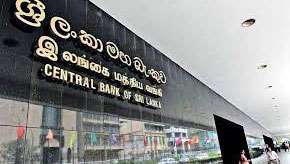Reply To:
Name - Reply Comment

In a bid to quicken the decline in lending rates in the economy in line with the recent policy rate cuts, the Central Bank has directed banks to cut rupee loan rates by 250 basis points by October-end and by a further 100 basis points by December-end from the levels as of July-end in addition to announcing interest rate caps on select lending products.
The Central Bank repeatedly expressed doubts about prolonged rigidity in the movement of lending rates and threatened banks with administrative action as they were quick to slash deposit rates following the June policy rate cut creating a larger gap between the lending and deposit rates.
Through a Monetary Law Act Order issued by the Monetary Board last Friday, the Central Bank imposed ceiling rates on pawning, pre-arranged temporary overdraft facilities and credit cards at 18 percent, 23 percent and 28 percent respectively.
The Central Bank said it will also closely watch other rates offered by banks and also the benchmark prime lending rate to see if banks follow this Order.
However, the Order is not mandatory on loan facilities which are already offered at 13.5 percent or lower, but banks cannot raise the interest rates of such facilities.
In addition to these measures, the Central Bank also said the penal rates charged on all lending products cannot exceed 200 basis points per annum, for the amount in excess of an approved limit or in arrears, during the overdue period.
The Order will apply on both new and existing products and came into effect from August 25.
The Central Bank is under pressure to help small businesses to have access to liquidity from banks as the current rates which still hover around 20 percent or more effectively hinder their accessibility to credit.
No legitimate business can be run borrowing at the current rates. Thousands of small businesses collapsed during the last three years due to both the pandemic and then by the economic crisis.
While the big corporates have access to funding or they could tap pre-arranged credit lines or have the required liquidity generated through their normal course of business, their small counterparts lack such buffers.
In fact, during the last three years, the big corporates thrived and became bigger at the expense of the small businesses, globally, as the lockdowns and higher borrowing costs affected small businesses disproportionately.
By announcing their August Monetary Policy decision, the Monetary Board left the key rates untouched after cutting rates in two consecutive months by a total of 450 basis points as they saw space for market lending rates to adjust further downwards without delivering another rate cut.
From the standpoint of the Central Bank, the Monetary Board however has space to deliver another rate cut as consumer prices eased to mid-single digit levels in July for the first time since November 2021, according to official indices.